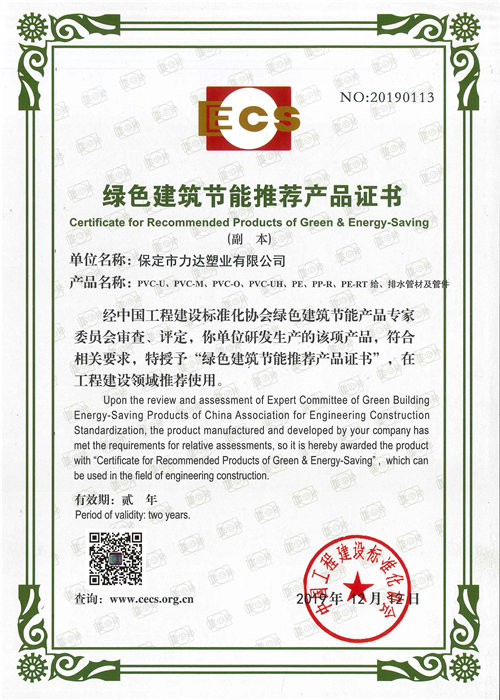Nov . 24, 2024 02:00 Back to list
ppr tube
Understanding PPR Tubes The Future of Plumbing Solutions
Polypropylene Random Copolymer (PPR) tubes have emerged as a popular choice in modern plumbing systems, owing to their exceptional durability, corrosion resistance, and ease of installation. As construction and plumbing technology advances, PPR tubes are being recognized for their efficiency and long-term reliability.
What are PPR Tubes?
PPR tubes are made from a type of thermoplastic polymer known as polypropylene. This material is designed to withstand high temperatures and pressures, making PPR tubes an excellent option for both hot and cold water applications. They are available in various diameters and lengths, enabling versatility in plumbing installations across residential, commercial, and industrial settings.
Advantages of PPR Tubes
One of the most significant advantages of PPR tubes is their resistance to corrosion and chemical reactions. Unlike traditional metal pipes, which can rust over time and degrade due to exposure to various substances, PPR tubes do not corrode. This property allows them to maintain their structural integrity and performance across a wide range of fluids, including potable water and chemicals.
Moreover, PPR tubes are lightweight, making transportation and installation significantly easier compared to heavier alternatives. The installation process is further simplified by the fact that PPR tubes can be joined using a heat fusion method. This fusion creates a seamless joint, which contributes to reducing the risk of leaks and other potential issues that can arise from traditional joint connections.
ppr tube

Another advantage is their thermal insulation properties. PPR tubes have a lower thermal conductivity compared to metal pipes, meaning they are more efficient at maintaining the temperature of the fluids they carry. This characteristic is particularly beneficial in hot water systems, where energy loss can lead to increased costs.
Environmental Considerations
In an era where sustainability is becoming increasingly important, PPR tubes stand out as an environmentally friendly solution. They are fully recyclable, which reduces waste and lessens the environmental impact associated with plastic manufacturing. Furthermore, the production of PPR tubes consumes less energy compared to that of traditional metal piping, contributing to a reduced carbon footprint.
Applications of PPR Tubes
PPR tubes are versatility defined. They are widely used in various applications, including residential plumbing, industrial systems, and even irrigation solutions. In residential settings, they are commonly employed for water supply lines, drainage systems, and heating systems. In industrial applications, their ability to handle corrosive substances makes them ideal for transporting chemicals and other aggressive fluids.
Conclusion
In conclusion, PPR tubes represent a significant advancement in plumbing technology. Their durability, lightweight nature, ease of installation, and resistance to corrosion make them an ideal choice for a multitude of applications. As we strive for more sustainable and efficient plumbing solutions, PPR tubes are clearly at the forefront. As the construction industry continues to evolve, the popularity of PPR tubes is likely to grow, paving the way for innovative plumbing solutions that are both reliable and environmentally conscious. As homeowners, builders, and engineers seek effective and long-lasting solutions, PPR tubes are undoubtedly a smart investment for the future of plumbing.
-
Premium CPVC Sheet: High-Temp & Chemical Resistant Solutions
NewsAug.15,2025
-
Durable PPR Pipe for Hot & Cold Water Systems - Easy Install
NewsAug.14,2025
-
Durable HDPE Sheet | Versatile & Impact-Resistant Plastic
NewsAug.13,2025
-
Premium PVC Soft Sheets: Clear, Flexible & Durable
NewsAug.12,2025
-
Premium PVC Round Rods: Durable, Chemical Resistant, Easy to Machine
NewsAug.11,2025
-
PP U-channel: Chemical-Resistant, Lightweight & Durable
NewsAug.10,2025

